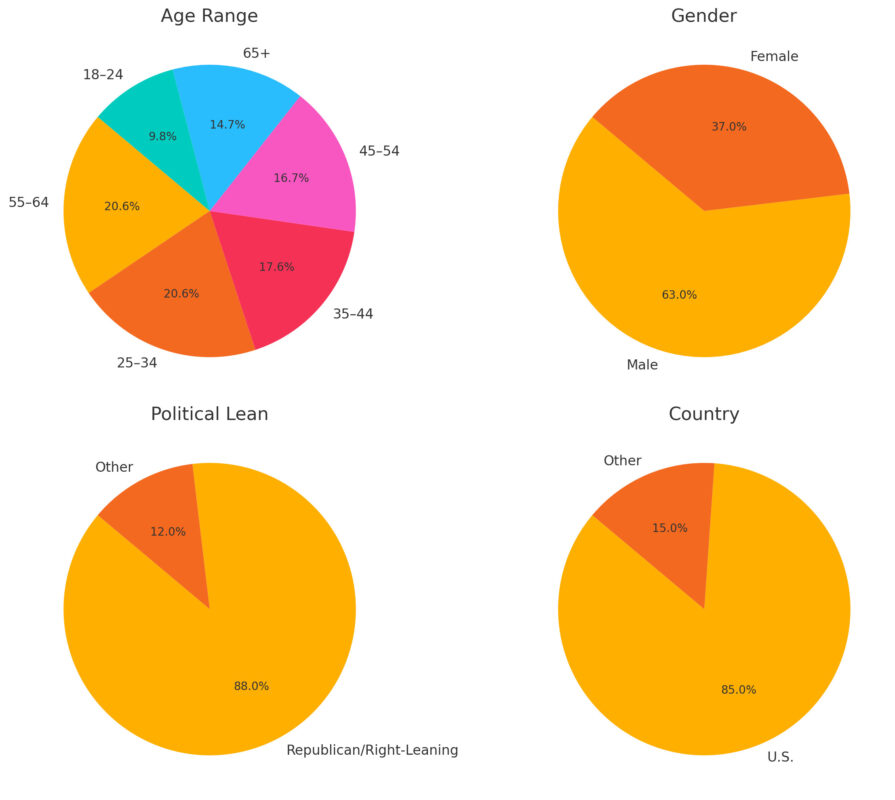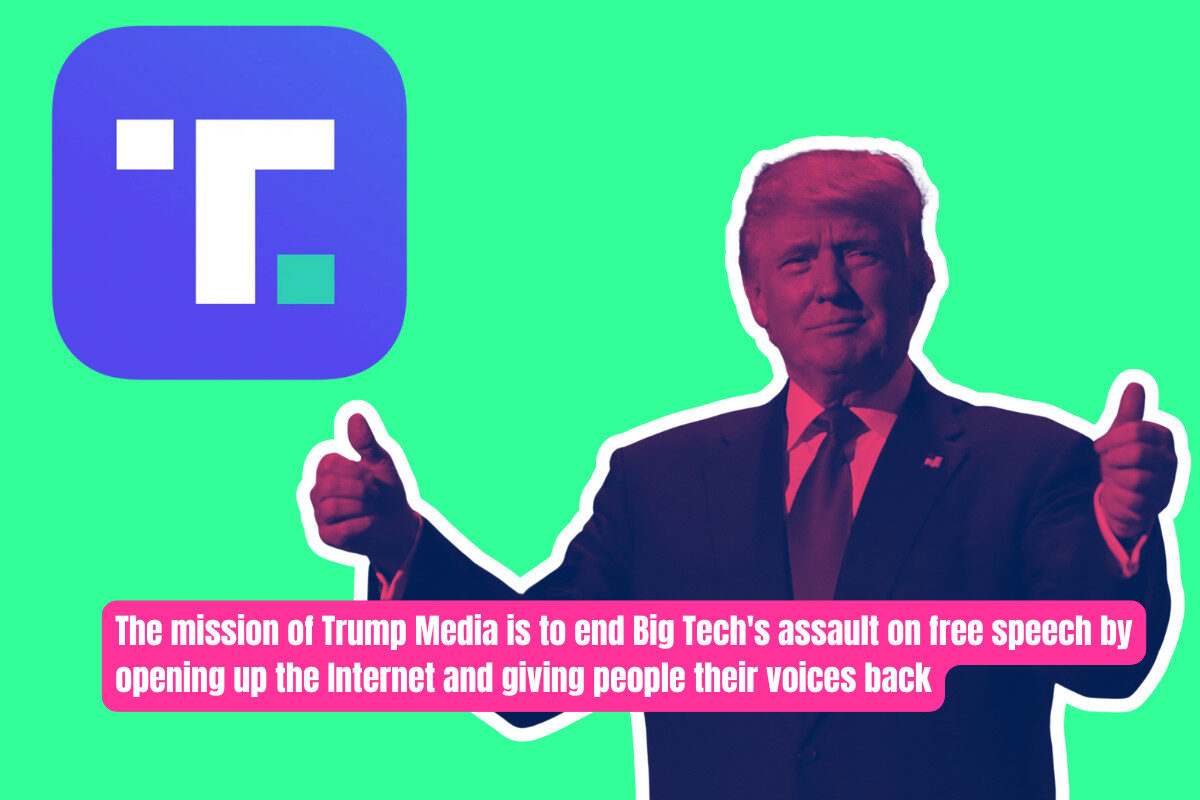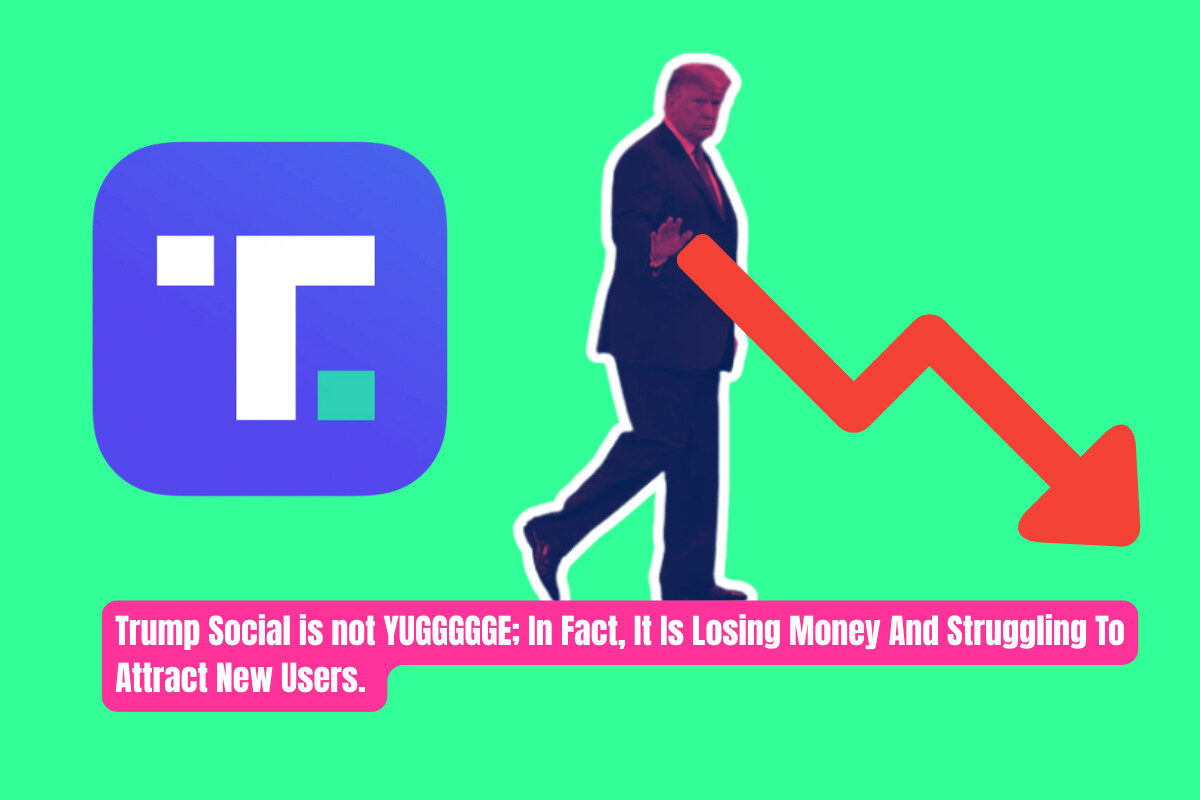Key Takeaways
- Truth Social is niche and politically siloed — 88% of users lean Republican, and most are over 55.
- Monthly usage is small — around 2–6 million, depending on the source.
- Engagement is low — nearly half of new users stop using the app within two months.
- Revenue is minimal — ad monetization is failing, and losses are in the hundreds of millions.
- User retention is weak — unless you’re a Trump loyalist, you’re unlikely to stick around.
Let’s break down the core metrics driving Truth Social in 2025: who’s using it, how it’s performing, and why it’s still struggling to grow.
Truth Social User Demographics (2025)

Truth Social has one of the most politically homogeneous user bases of any social platform today.
- 88% of users identify as Republicans or right-leaning independents
- 84–85% of users are based in the U.S.
- 60% of users are male
- 65% of users are over the age of 55
- Only ~10% of users are 18–24
The Typical Truth Social User in 2025:
A conservative, middle-aged or older American man who primarily uses the app to engage with like-minded political content.
Gen Z and younger millennials — traditionally the most engaged age group on social media — largely avoid the platform.

Surveys suggest half of adults aged 18–34 have zero interest in ever using it.
Compared to mainstream platforms like Facebook or Instagram, Truth Social’s community is insular and demographically narrow. This limits its network effects and appeal.
Platform Size & Usage Trends

Truth Social is tiny compared to X or Facebook.
Monthly Active Users (2025 Estimates):
- Low estimate: 2 million
- High estimate: 6.3 million
- 2024 peak: 13.8 million in March
- 2024 low: 2.1 million in June
Its best traffic month was during Trump-related legal news and GOP primaries. But the bounce was short-lived — most newcomers didn’t stick around.
Downloads and Retention:
- Total app downloads: 4.36 million
- 49% of users stop using it after 60 days
- Most users log in less than 2 days a week
There’s a small, loyal core user base: 67% of those who try it say they plan to keep using it. But this loyalty hasn’t translated into sustained growth or broader adoption.
Financial and Market Overview

Truth Social’s parent company, TMTG, is bleeding money and surviving on investor hype, not profits.
For the three-month period that ended 31 March, the company posted a loss of $327.6m, which it said included $311m in non-cash expenses related to its merger with a company called Digital World, which was essentially a pile of cash looking for a target to merge with.
Key Financial Stats:
- Q1 2024 Revenue: ~$770K
- Q1 2024 Net Loss: $327.6 million
- (Includes $311 million in merger-related accounting costs)
- Q1 2023 Net Loss: $210 million
- 2023 Ad Revenue: ~$1.1 million
- 2024 Ad Revenue (Q1): Down to $770K
In short, Truth Social isn’t making money, and its ad business is barely functional.
Market Valuation:
- March 2024 IPO (via SPAC): Stock symbol DJT
- Peak stock price: ~$80/share
- 2025 stock price: Under $50
- 2025 valuation: Estimated hundreds of millions, down from initial $3–4 billion projections
Investor excitement spiked early in 2024 but dropped fast. Today, the company’s value is a fraction of what was originally promised.
Is Truth Social A Failure?

Truth Social’s appeal hasn’t expanded beyond its original base, and the data shows no clear path to mainstream success. It’s still very much Trump’s Twitter clone, just smaller, older, and financially unsteady.
Proof that just because you CAN do something doesn’t always mean you should.
Sources & Wider Reading
- Pew Research Center – News Consumption on Truth Social (Sep 2024)
- Similarweb via DemandSage – Geographic User Distribution
- Search Logistics (2025) – Truth Social User Statistics and Surveys
- NDTV (July 2025) – “All About Truth Social” Usage Report
- SEO.ai (Jan 2025) – Truth Social User Count Timeline
- The Guardian (May 2024) – Trump Media Q1 2024 Financial Results
- Investopedia / Search Logistics – Stock Ticker “DJT” and Market Debut

